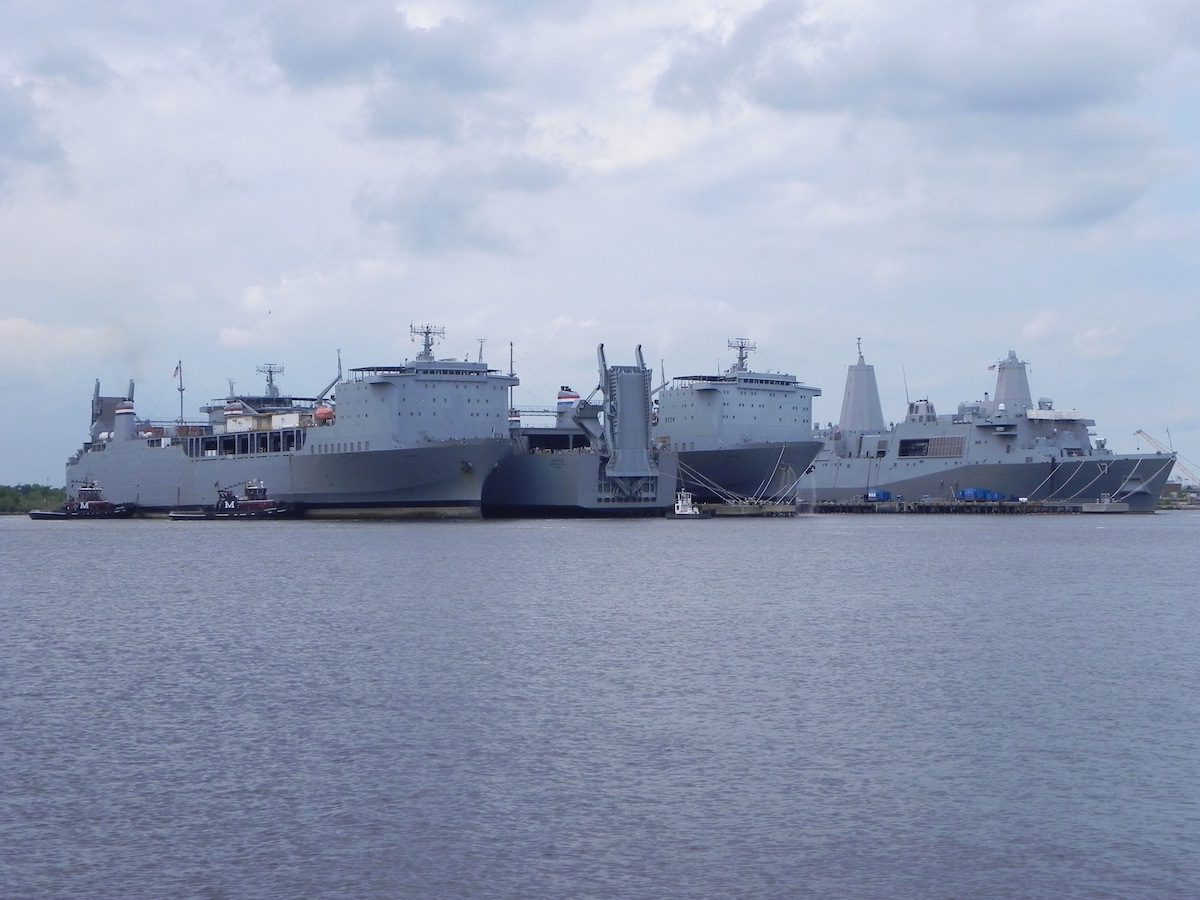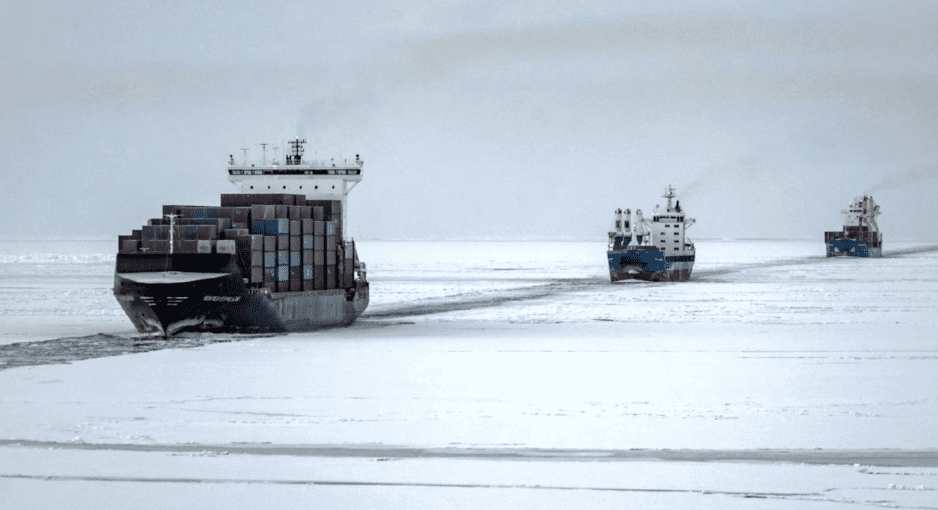The RRF fleet vessel M/V Cape Ray (T-AKR 9679) pictured alongside other RRF ships and Navy vessels at her homeport at the NASSCO-Earl Shipyard in Portsmouth, Virginia. Photo taken September 17, 2014. U.S. Navy Photo
The U.S. Department of Defense has ordered a large-scale turbo activation of ships in the U.S. Maritime Administration’s (MARAD) Ready Reserve Force fleet.
The turbo activation is part of a large-scale activation exercise ordered by the U.S. Transportation Command (USTRANSCOM) on September 16. The activation calls for a total of 28 RRF fleet vessels to transition from reduced operating status to fully crewed and full operating status within 5-days. Activations are commonly followed by immediate sea trials.
The last turbo activation exercise was directed by Military Sealift Command in July when it ordered three to get underway with just five days notice from their berths in Alameda, California. The three vessels participating in July’s exercise included the SS Gem State (T-ACS 2), SS Keystone State (T-ACS 1) and SS Grand Canyon State (T-ACS 3). All three ships departed for the three-day sea trial within four days of activation.
This most recent activation now the fourth turbo activation exercise to take place this year, according to USTRANSCOM.
MSC’s and MARAD’s reserve fleets are collectively referred to as the surge sealift fleet and are expected to be a ready source of shipping and transportation of cargo, equipment and supplies to the U.S. Army and Marine Corps.
The turbo activation exercises are meant to provide an assessment of the readiness of U.S. sealift forces and ensure their readiness in times of need. Not only do they ensure that ships can meet their five and ten-day readiness status, but also that their crews are prepared to operate alongside the Navy.
USTRANSCOM notes that typical activation exercises usually include a small number of vessels, but this most recent is being described as a stress test to test the readiness of the fleet, coming after MARAD Administrator Admiral Buzby and the head of USTRANSCOM testified to the poor shape of the RRF fleet before a joint hearing of the House Armed Services Committee in March 2019.
“This comes after a March 2019 testimony of the head of Transcom and MARAD on the poor state of the force due to deferred maintenance and age of some of the vessels,” notes gCaptain contributor Salvatore Mercogliano.
“These exercises typically involve only a few ships but this event targets 28 vessels for activation to provide a better assessment of the readiness of U.S. sealift forces than can be accomplished with fewer activations,” US TRANSCOM said in a press release.
We understand that the this most recent activation – exercise or not – is the largest since the Persian Gulf War in 1990 and the invasion of Iraq in 2003.
MARAD has managed and maintained the United States’ RRF fleet since 1977. It now consists of 46 vessels, comprised of 35 roll-on/roll off (RO/RO) vessels, 2 heavy-lift or barge carrying ships, 6 auxiliary craneships, 1 tanker, and 2 aviation repair vessels. The RRF fleet is a subset of the National Defense Reserve Fleet (NDRF), which is comprised of approximately 100 inactive, Government-owned vessels that are maintained in order to support national defense and emergencies.
Both RRF and NDRF ships were also activated to support relief efforts following Hurricanes Harvey, Irma, and Maria.

 Join The Club
Join The Club











